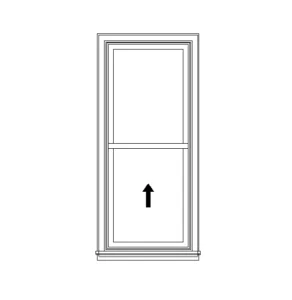Glazing frames
Frame materials
Aluminium
Aluminium is lightweight, strong, durable AND a great conductor of heat energy. This actually makes it a poor insulator for glazing frames. Still often used, aluminium frames can be optimised with a thermal break or in combination with other more insulative materials.
TB aluminium
TB aluminium or thermally broken aluminium is a frame made of two separated aluminium sections with an insulative material in between. This insulative material (commonly a low-conductivity polymer) provides a break for heat flow through the frame. This acts in a similar way to air in a double-glazed windowpane. TB aluminium frames are among the highest-performing frames available and as such are more expensive.
Timber
Timber is a sustainable and organic material. it is a good insulator that can be highly durable depending on the type used. Timber can be treated to prevent decay and deformation.
As a naturally occurring material, timber can be influenced by the humidity of the environment. Glazing frames require extra allowances for shrinkage and swelling in the timber. These gaps should be sealed with weather stripping when installed to prevent air infiltration and improve insulation.
uPVC
uPVC (unplasticised polyvinyl chloride) is a strong and lightweight plastic. uPVC frames provide some of the best thermal performance for frames available while becoming increasingly more available in Australia. uPVC can be easily moulded to appropriate sizes and sealed well as needed to maintain insulation.
Composite
Composite frames are a combination of aluminium and either timber or uPVC. These combine the low maintenance and durability of aluminium with the much improved thermal performance of timber or uPVC.
Frame styles
The way a window opens will also affect it’s energy performance.
Casement
Casement windows open outwards like a door on a hinge, guiding airflow into the home. Casement windows can open up to 95%.

Louvre
Louvres can open up to 90% to allow for significant cross-ventilation. When opened at an angle they can still block rain and sunlight (if tinted or coated in films).

Sliding
A two-panel sliding window can only open 1 panel, while the other will always be blocking airflow, with a maximum opening of about 45%. Sliding windows take up less space to open as opposed to casement opening out or louvres sitting at an angle. This is also similar to sliding doors.

Single and double hung
This window type has two panels aligned vertically. Single hung has one fixed panel while the other can slide up and down, while double hung has both panels sliding. These windows can open up to 40%. Like the sliding door, these window types do not guide any airflow in as casements and louvres do.

Awning
Awning window types hinge open from the top, good at blocking rain out while allowing for airflow, however minimal. Awning types can open up to 30% of their total frame area.

Tilt and turn
Tilt-and-turn windows have hinges on two adjacent edges of the panel, allowing them to act like either casement-style or awning-style windows.

